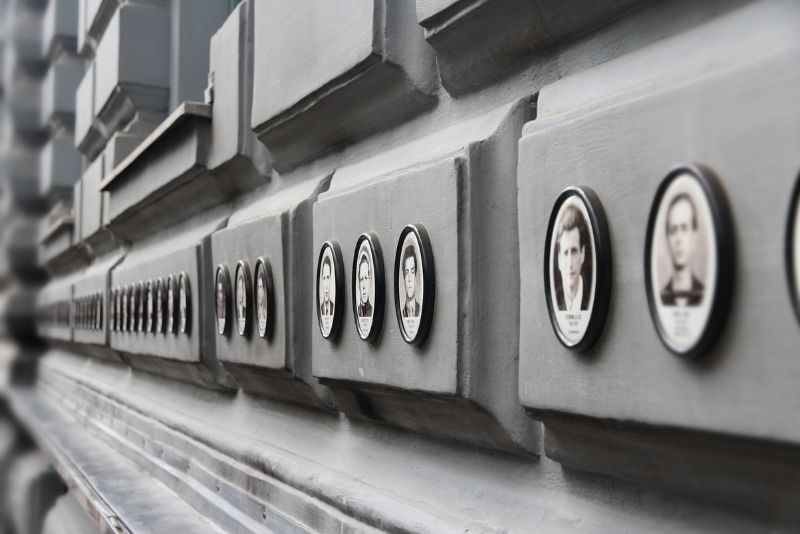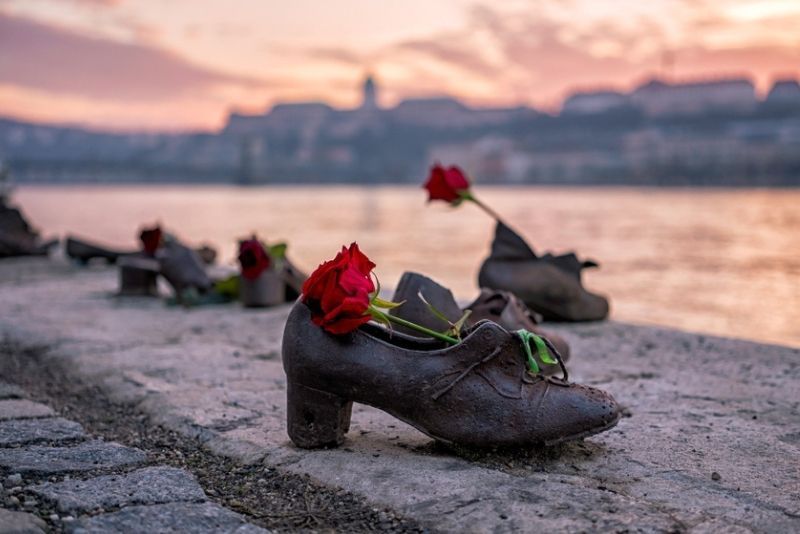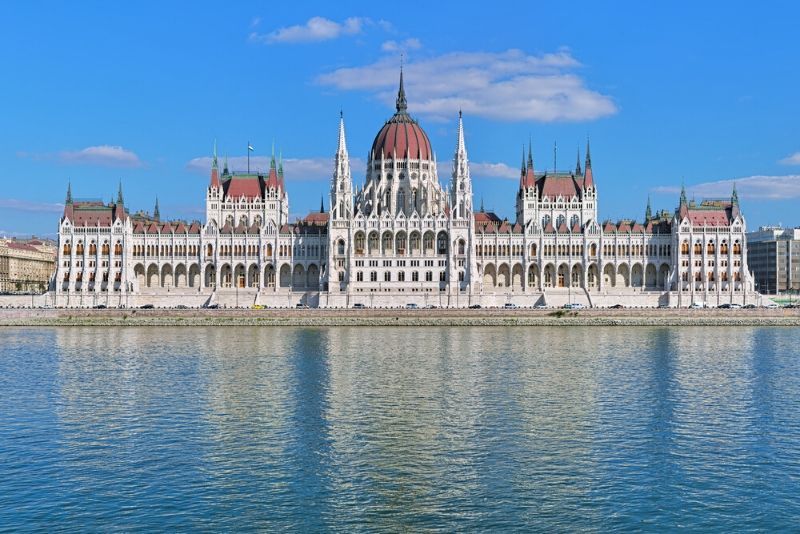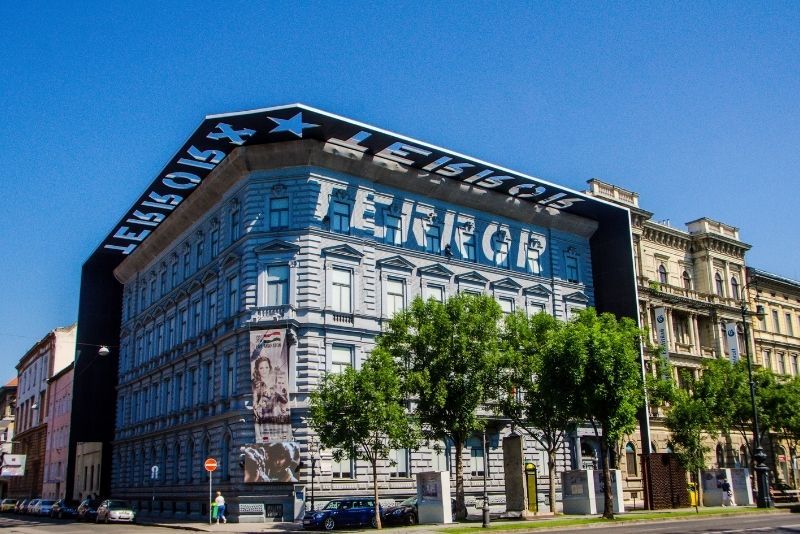Communism Tours in Budapest
Hungary, like many other countries in Eastern Europe, was under communist rule and Soviet influence for many years. The regime lasted between 1949 and 1989 and there are still dozens of Soviet monuments scattered throughout the capital city of Budapest.
Communism tours in Budapest provide you with the opportunity to gain a deeper understanding of Hungary’s complicated political past. Visit some of the city’s most iconic landmarks as you familiarize yourself with local history and culture.
Hungary, like many other countries in Eastern Europe, was under communist rule and Soviet influence for many years. The regime lasted between 1949 and 1989 and there are still dozens of Soviet monuments scattered throughout the capital city of Budapest.
Communism tours in Budapest provide you with the opportunity to gain a deeper understanding of Hungary’s complicated political past. Visit some of the city’s most iconic landmarks as you familiarize yourself with local history and culture.

(0/24) checking Musement...
Hungary, like many other countries in Eastern Europe, was under communist rule and Soviet influence for many years. The regime lasted between 1949 and 1989 and there are still dozens of Soviet monuments scattered throughout the capital city of Budapest.
Communism tours in Budapest provide you with the opportunity to gain a deeper understanding of Hungary’s complicated political past. Visit some of the city’s most iconic landmarks as you familiarize yourself with local history and culture.

Here's all you need to know about communism tours, one of the most enlightening sightseeing tours in Budapest.
What are the best communism tours in Budapest?
Small-group walking tour about communism in Budapest
Meet your expert local guide at Deák Ferenc Square, where your small-group walking tour will begin. Follow your guide as you stroll through one of the city’s neighborhoods, stopping to view Soviet monuments and various remnants of the communist regime.
Gain a better understanding of the communist ideology and how life in Budapest has changed since the 1956 revolution as you make your way deeper into the city. In addition to informative commentary, your guide also shares personal stories from Hungary’s past.
You’ll also take a ride on the subway and sit down in a traditional bar, where you’ll enjoy a drink as you chat with your guide and other tour participants.
Budapest communism tour with museum visit

Learn about all the major events that took place in Budapest between the 1956 revolution and the fall of the Iron Curtain when you join this 3-hour walking tour in Budapest. Discover little-known stories of World War I and II as you view cultural artifacts in a private exhibition hall.
Not only will you learn about the most important historic events during the communist era, but you’ll also get a feel for how locals lived during this time. Your guide will also shed some light on the infamous communist propaganda, as well as protests and circumstances around freedom of speech.
Some of the places that you’ll visit during this informative tour include the Hungarian Parliament Building, the Shoes on the Danube Bank and the Budapest Retro Interactive Museum.
Communism tour with House of Terror or Statue Park visit
Immerse yourself in Budapest’s fascinating past with this 3-hour walking tour in the capital city that teaches you about the effects that communism had on Hungary. No matter your level of knowledge, this tour is designed for communism novices and political history buffs alike.
Your tour begins with a cup of coffee at Bambi Presszó café with your local guide. From here, you’ll walk through the city and view the remnants of the communist era, including bullet holes, the Liberty Square Soviet Memorial, the Hungarian Parliament Building and other landmarks.
Gain valuable knowledge and insight from your local tour guide and feel free to ask any burning questions that you may have about Budapest. During the tour, you may choose to visit the Memento Communist Statues Park, or the House of Terror, a museum dedicated to the history of the 20th-century fascist and communist regimes that ruled Hungary. It also serves as a memorial to those who lost their lives.
Which places are visited?
While each communism tour in Budapest is slightly different, many of these tours share a similar itinerary and some of the places you may visit include the Hungarian Parliament Building, the Liberty Square Soviet Memorial, the Budapest Retro Interactive Museum and a traditional ruin bar.
Hungarian Parliament Building

Opened in 1904, the Hungarian Parliament Building is the largest and one of the tallest buildings in Hungary. This impressive landmark, with its rich and fascinating history, is a popular tourist destination for those visiting Budapest.
Thanks to its intricate designs and breathtaking architecture, the structure is considered one of the most beautiful parliament buildings in the world.
Liberty Square
Although Liberty Square is a beautiful and peaceful public place, the large square is also of great historical importance. The square is home to a number of important monuments, including the Soviet Monument as well as a statue of Ronald Reagan.
Some of the landmarks surrounding the square include Hungarian National Bank, the American Embassy and the Hungarian State Television.
Budapest Retro Interactive Museum
While not all communist tours in Budapest include a visit to the Budapest Retro Interactive Museum, those that do provide a valuable additional experience to tour participants. Learn about the stories behind the thousands of artifacts displayed in the exhibitions.
These exhibitions aim at providing you with a realistic idea of Hungary’s past and the day-to-day life of Hungarians living under communist rule.
House of Terror

Some communism tours give you the option of visiting the House of Terror. This powerful institution serves as a stark reminder of the brutal periods of Hungary's 20th-century history.
Housed in a building that was a venue of political repression during two bloodstained periods of Hungarian history, its exhibitions and installations offer valuable insights into the impacts of totalitarian regimes
Ruin bar
Most communism tours in Budapest end the excursion at one of the city’s many “ruin bars." These bars are usually filled with an eclectic selection of vintage furniture and became popular during the 1960s, directly after the revolution.
Having a drink and a chat in one of these ruin bars gives you a taste of local life and is a great way to conclude your trip!
How much do communism tours in Budapest cost?
Basic communism tours in Budapest typically cost around US$50 per person for a small-group excursion, including an expert guide and a drink in a local cafe.
Private tours, which provide a more personalized experience, typically cost US$100 per person. You can expect to pay at least US$120 per person for a private tour that includes entry to the Budapest Retro Interactive Museum.
What is included?
When you book a communism tour in Budapest, everything you need for a comfortable and informative experience is provided for you, including an expert guide, subway tickets (if needed) and even a drink in a local cafe.
Certain tours are also inclusive of an entry ticket to Budapest Retro Interactive Museum, which is home to dozens of innovative exhibitions. You may also be provided with a notebook and a souvenir pen to make notes with during your excursion.
Where does it start?
Guided communism tours in Budapest typically begin at easy-to-find landmarks within the city, such as in front of the Kempinski Hotel or the Deák Ferenc Square. Make sure that you arrive at the meeting point at least 5 minutes before the tour’s starting time.
Most private communism tours in Budapest offer hotel pickup services, in which your tour guide will meet you outside your hotel and your tour will begin from there.
How long does it last?
The typical duration of a communism tour in Budapest is approximately 3 hours long, providing you with more than enough time to discover the major landmarks and learn more about communism in Hungary.
Is it wheelchair friendly?
Unfortunately, communism tours in Budapest do not cater to wheelchair users or those with mobility issues. Due to the amount of walking that is required for most communism tours, tour participants should have a moderate level of physical fitness.
When is the best time for a communism tour in Budapest?
The best time to join a communism tour in Budapest is in spring (March to May). This is one of the best times to visit Budapest. The weather is pleasant, the city is blooming, and the tourist crowds are still relatively small. It's a great time for walking tours around the city's historical sites, including those relating to its communist past.
What other sightseeing tours can you do in Budapest?
- Free walking tours in Budapest
- City tours in Budapest
- Hop-on hop-off tours in Budapest
- Segway tours in Budapest
- Scooter tours in Budapest
Travel tips
- Budapest's historical sites are spread throughout the city, so there might be a considerable amount of walking. Wear comfortable shoes and dress appropriately for the weather.
- Each site has its own story and significance. Allow yourself plenty of time to reflect on the information presented, especially at museums like the House of Terror.
- Many of these sites are memorials to those who suffered under the communist regime. Be respectful and considerate when visiting these places.

